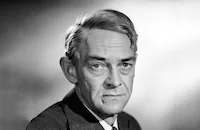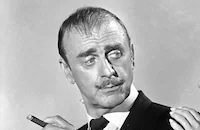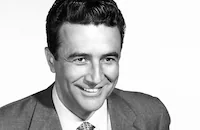The Scarlet Coat

Brief Synopsis
Cast & Crew
John Sturges
Cornel Wilde
Michael Wilding
George Sanders
Anne Francis
Robert Douglas
Film Details
Technical Specs

Synopsis
In 1780, the British are gaining the upper hand in the American war of independence. The colonists' strongest defense is the fort at West Point, which is under command of General Benedict Arnold. One day, American intelligence officer Major John Bolton meets with his commanding officer, General Robert Howe, and produces a coded message removed from the body of a spy he shot the night before. The message, from someone named "Gustavus," contains top secret military information, and John concludes that Gustavus must be a highly placed person in the colonists' army. John then goes to a tavern and is searching the room of guest Sally Cameron, who is traveling to New York under a flag of truce, when she enters the room and shows him her signed military pass. John later notices a stranger entering the inn with a package for a man named Moody. Col. Winfield takes the package and says he will deliver it to Moody the following evening. John follows him to his room and takes the package at gunpoint, exposing Winfield as a British spy.
During the ensuing scuffle, John shoots Winfield. After being arrested for shooting a superior officer, John is taken to Howe, who says that Winfield was a spy named Moody and shows him a letter from Gustavus found in the package. Howe proposes that John go undercover to try to learn Gustavus' identity, by escaping from prison and deserting to the British. Although it places him at great risk, John accepts the assignment. John goes to New York and calls on Dr. Jonathan Odell, in whose care the messages to Gustavus were sent, and inquires about James Osborne, to whom Gustavus' letter was addressed. Odell denies knowing Osborne, but demands at knifepoint that John leave the letter. Their struggle is interrupted by a British major, John Andre, who is about to arrest John until he mentions Moody. Odell remains suspicious, but the idealistic, gentlemanly Andre likes John and accepts his offer to spy for the British.
That evening, John attends a gathering at Andre's and encounters Sally, who is Andre's lover. John is given his first assignment, accompanying civilian spies Brown and Durkin while they sabotage a chain bridge. John kills the spies, then returns to New York and reports that they were intercepted by a guard boat. After John produces a false message that he claims to have gotten from an American courier, Andre concludes that Durkin was able to deliver his letter, and, at the Cameron family's country estate, the British prepare an attack. John gets Sally alone and gently suggests that she might have some sympathy with the rebel cause. Andre instructs John to go to New York to hand deliver a message to British military leader Sir Henry Clinton, but Sally privately warns him that the assignment is a test, and he will be stopped and searched, on Odell's orders. After burning all incriminating evidence, John kisses Sally, but although she admits to having feelings for him, she believes their relationship--and the revolution--have no future. When John leaves the Cameron home, he is intercepted by British soldiers, taken to Odell and searched. The search uncovers nothing but the message to Clinton, and John is released.
The following morning, Andre asks Sally to marry him, but she demurs. Word then arrives of a rebel ambush, and Sally is stunned to hear that John has been arrested and is to be executed. Although jealous over Sally's obvious interest in John, Andre nonetheless vouches for his character and secures his release. That evening, Andre asks John to attend a meeting aboard a ship between Osborne and Gustavus. At the appointed time, however, Gustavus sends a man named Joshua Smith to request that the meeting be held elsewhere, and Andre sets off alone for his "rendezvous with history." John uses a lantern to signal the ship's location to the rebels, and knocks Odell out when he grows suspicious. The British detect his activity, however, and John is forced to dive into the river to escape as the rebels open fire on the ship. The following morning, John takes rebel troops to Smith's house, and finds Andre's uniform jacket in the closet. When John learns from the rebel leader that Osborne was arrested but released into Arnold's custody, he deduces that the general is a traitor.
On the road, John encounters the captured Andre and discovers that he is actually Osborne. Arnold flees to the British, and Andre is found guilty of spying by a military court and sentenced to death. John tells the court that Andre entered their lines as a soldier and should be treated as a prisoner of war rather than a spy, noting that Andre removed his uniform only at Arnold's instruction. The court is not swayed, however. That evening, Andre asks John to look after Sally. John is unwilling to abandon his friend's cause, and the next morning, asks Andre to endorse George Washington's proposal that Clinton exchange Arnold for Andre. Andre refuses, saying that to ask Clinton to betray his alliance with Arnold would insult his honor. With great dignity, and proudly wearing his uniform, Andre walks out to meet his death.

Director

John Sturges
Cast

Cornel Wilde

Michael Wilding

George Sanders

Anne Francis

Robert Douglas

John Mcintire

Rhys Williams

John Dehner

James Westerfield
Ashley Cowan

Paul Cavanagh
John Alderson
John O'malley

Bobby Driscoll
Paul Frees
Robin Hughes
Anthony Dearden
Bruce Lester
Dabbs Greer
Vernon Rich
Charles Watts
Peter Adams
Bob Dix
Wesley Hudman
Tom Cound
Robert Forrest
Keith Mcconnell
Barry Regan

Ric Vallin
Ronald Green
Joe Locke
Olaf Hytten
Vesey O'davoren
Gil Stuart
Guy Kingsford
George Peters
Gordon Richards
Owen Mcgiveney
Wilson Benge
Charles R. Keane
Richard Simmons
John Blackburn

Harlan Warde
Don C. Harvey
Leslie Denison
Jim Hayward
Rush Williams
Ivan Hayes
Leo Needham
Tristram Coffin
Michael Fox
Jennifer Raine
Richard Peel
Dennis King Jr.
Ethan Laidlaw
Anne Kunde
Phyllis Coghlan

Byron Foulger
Crew
Alvord Eiseman
Fred Frank
Cedric Gibbons
Sydney Guilaroff
Jean Heremans
Harold Humbrock
Kendrick Kinney
Ben Lewis
Frank Mackenzie
Walter March
Wesley C. Miller
Nicholas Nayfack
Warren Newcombe
Richard Pefferle
Capt. John S. Peters
Walter Plunkett
Merrill Pye
Conrad Salinger
Karl Tunberg
William Tuttle
Paul C. Vogel
Edwin B. Willis
Edward Woehler

Videos
Movie Clip



Trailer
Hosted Intro
Film Details
Technical Specs

Articles
The Scarlet Coat
Arnold was a distinctly supporting role in The Scarlet Coat, but they still went for quality, casting Robert Douglas, who had crossed swords memorably with Errol Flynn in Adventures of Don Juan (1948) and with Wilde himself in At Sword's Point (1952). More prominent was Michael Wilding as the British officer who leads Arnold astray but develops a grudging admiration for Wilde's character. The film would mark the end of Wilding's MGM contract, a three-year deal cut principally to keep wife of the hour Elizabeth Taylor happy. Though the studio had paid him well, his roles there had stalled his once-promising career in British films.
The Scarlet Coat featured a curious collection of talent who were either on the verge of bigger things or coming off their own career highs. Director John Sturges would earn his only Oscar® nomination that year - but for another film, Bad Day at Black Rock, which would establish him as a top director of westerns. Leading lady Anne Francis, derided in Variety's review for her lack of sex appeal in the role, would play her sexiest role ever a year later as Altaira, the space virgin, in MGM's scifi epic Forbidden Planet. Villain George Sanders had played major roles in the '40s in such films as Rebecca and Forever Amber, culminating in an Oscar® as Best Supporting Actor for All About Eve in 1950. From that point, however, his career was a morass of minor roles. In his autobiography, he would list The Scarlet Coat as one of many films that must have paid handsomely but had totally vanished from his memory.
The most tragic of The Scarlet Coat's cast, however, was child actor Bobby Driscoll. After notable hits in Disney's Song of the South (1946) and Treasure Island (1950) and a special Oscar® as outstanding juvenile performer for The Window (1949), his career had gone steadily downhill. The Scarlet Coat would mark his final Hollywood outing. After taking time off to recover from adolescence, he made only one other film, a low-budget juvenile delinquency drama called The Party Crashers in 1958, which also marked the screen swan song of another tragic star, Frances Farmer. From then on, he fought a losing battle with drug addiction, spending a year in the Chino Penitentiary. In 1968, at the age of only 31, his body was discovered in an abandoned tenement in New York and buried in a pauper's grave.
Director: John Sturges
Producer: Nicholas Nayfack
Screenplay: Karl Tunberg
Cinematography: Paul C. Vogel
Art Direction: Cedric Gibbons, Merrill Pye
Music: Conrad Salinger
Cast: Cornel Wilde (Maj. John Bolton), Michael Wilding (Maj. John Andre), George Sanders (Dr. Jonathan Odell), Anne Francis (Sally Cameron), Robert Douglas (Benedict Arnold), Bobby Driscoll (Ben Potter).
BW-89m.
by Frank Miller

The Scarlet Coat
Quotes
Trivia
Notes
The opening credits contain the following written prologue: "The American Secret Service came into being with the celebrated 'Case of Gustavus.' The identity of Gustavus-Benedict Arnold-has been known for generations, but the story of how he was unmasked has only been revealed in recent years. This is that story." The credits also include this acknowledgment: "We are deeply grateful to Sleepy Hollow Restorations for permitting us to photograph many scenes in their original locale at Philipse Castle in Legendary Sleepy Hollow." A voice-over narration at the beginning of the film explains that in 1780, the Revolutionary War was going badly for the colonists, with the fort at West Point the only obstacle to Britain's victory.
At the end of the film, the narrator notes that Major John Andre was interred at Westminster Abbey, and is highly esteemed to this day. Andre (1751-1780) was appointed adjutant general of the British forces in America in 1778, and served as aide to the British commander, Sir Henry Clinton. Benedict Arnold (1741-1801) had earned a distinguished reputation on the battlefield when he became commander of the Philadelphia militia in 1778. The following year, Arnold entered into treasonable communications with Clinton, and as depicted in the film, in 1780 agreed to surrender the fort at West Point to the British in exchange for an army commission and money. When Andre was captured, Arnold joined the British army as an officer and military advisor. Arnold died in London.
According to an April 1952 Daily Variety news item, M-G-M purchased an original story titled "Betrayal on the Hudson" by Hollister Noble and Sidney Harmon, to serve as the basis of Karl Tunberg's screenplay. The extent of Noble and Harmon's contribution to the film has not been determined. According to a January 1953 Hollywood Reporter news item, Stewart Granger was originally cast as "Major John Bolton," and Robert Pirosh was assigned to direct. An August 1953 Hollywood Reporter news item names Robert Taylor as Michael Wilding's co-star. In June 1954, Hollywood Reporter reported that filming would be postponed because of a lack of sound stage space and a shortage of stagehands, "due chiefly to the high activity in TV." A November 1954 Hollywood Reporter news item adds Vince Perry to the cast, but his appearance in the final film has not been confirmed. Portions of the film were shot on location in Tarrytown and along the Hudson River in New York. The Scarlet Coat was Wilding's last film for M-G-M.

Miscellaneous Notes
Released in United States Summer August 1955
CinemaScope
Released in United States Summer August 1955















